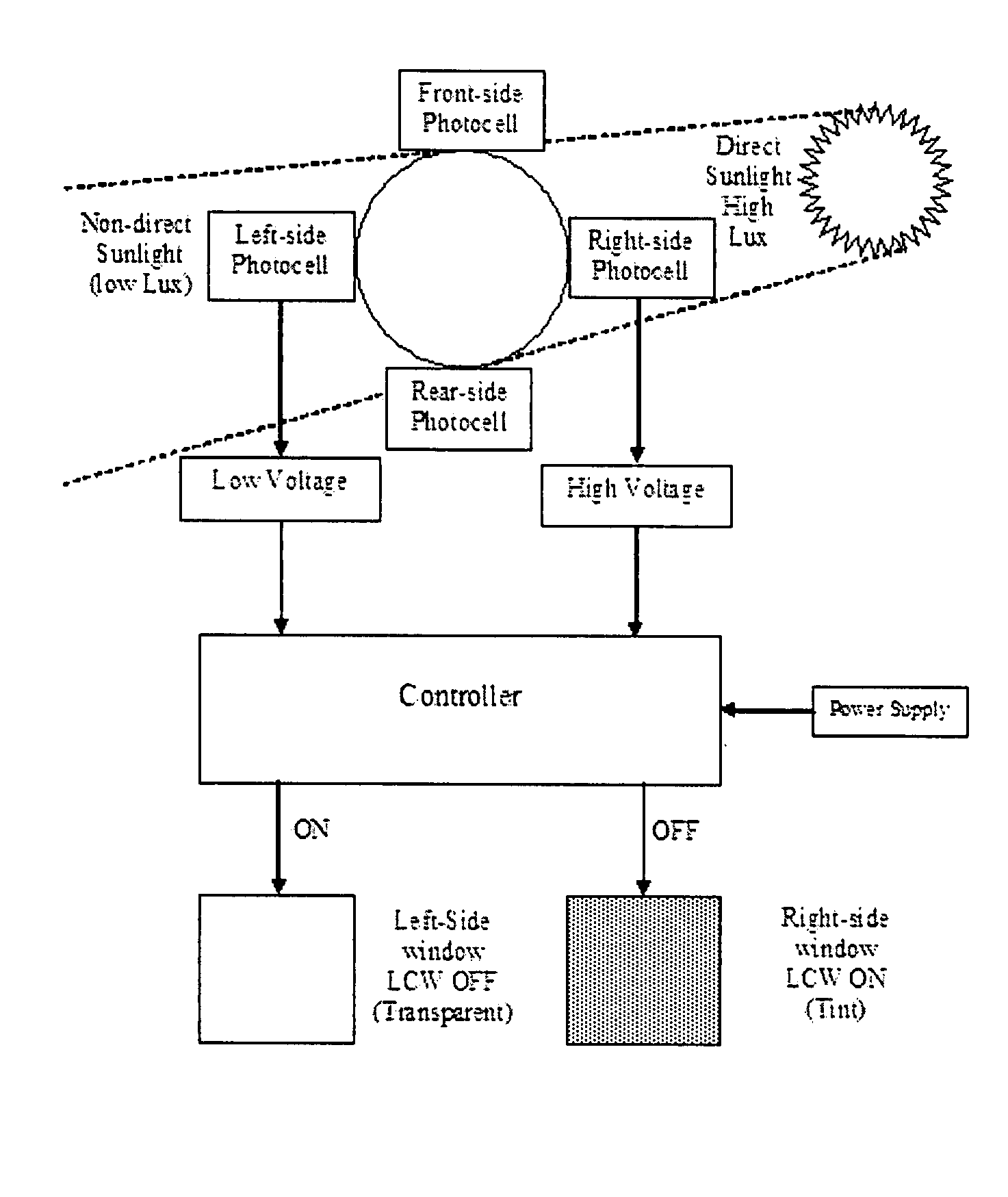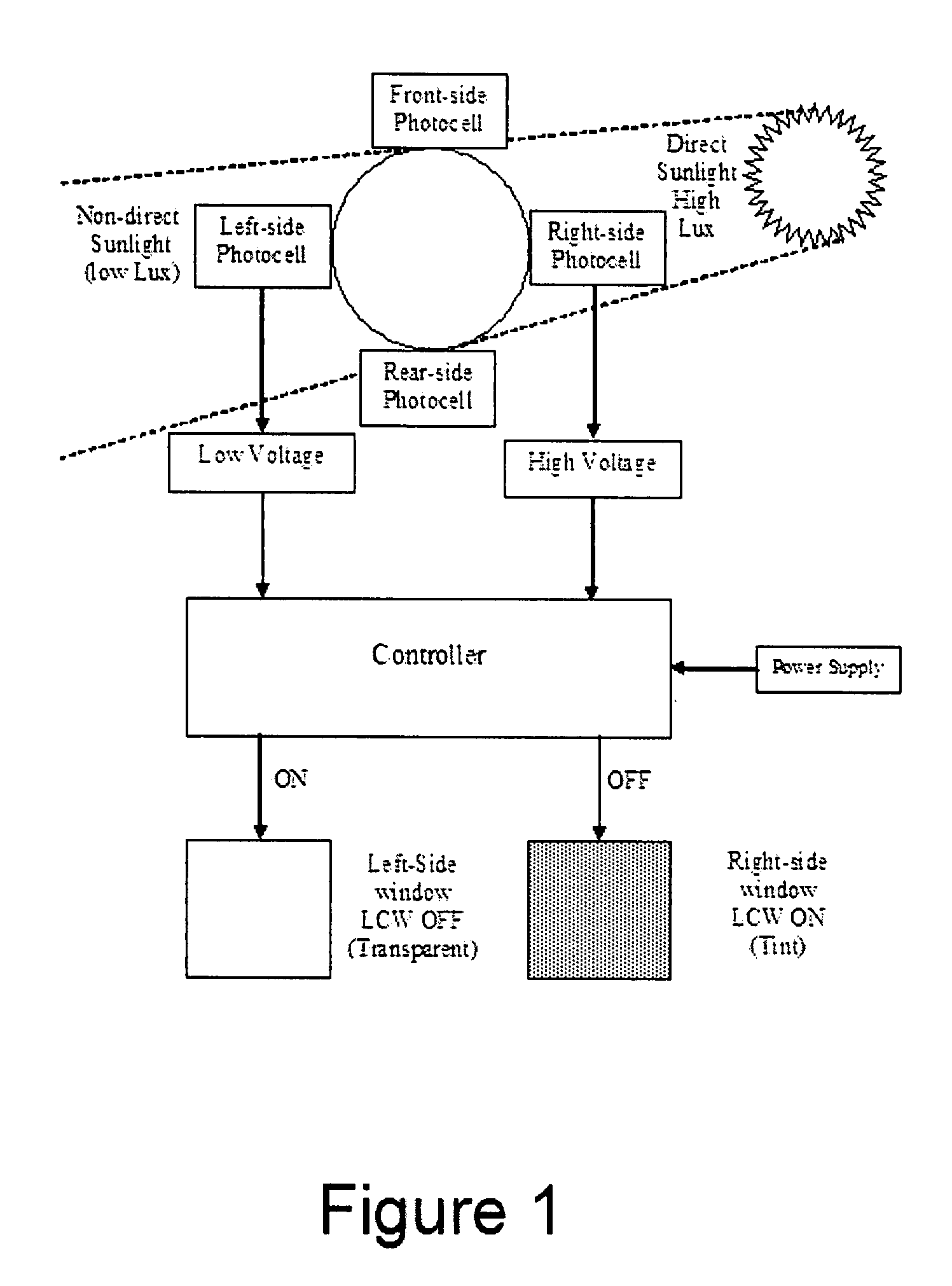Electronic Window Shading System for Houses, Transport Vehicles and the Like
a technology of electronic window shading and electronic window covering, which is applied in the direction of light dependant control system, sustainable building, building components, etc., can solve the problems of converting to dark, not working for rear-view mirrors, and expensive cars with all kinds of shabby curtains, so as to reduce condensation, improve comfort, and diffuse annoying sun glare
- Summary
- Abstract
- Description
- Claims
- Application Information
AI Technical Summary
Benefits of technology
Problems solved by technology
Method used
Image
Examples
second embodiment
[0109]In the present invention also by referring to the accompanying drawings and in particular to FIGS. 3 and 10, an automatic electronic window tinting system in a transport vehicle comprises a photocell unit for each window placed beside each window. FIG. 3 shows an automobile having six windows with an automatic electronic window tinting system comprising four photocells. The right and left side photocells control two side windows, each. FIG. 9 shows an automobile having six windows with an automatic electronic window tinting system comprising six side-mounted photocells. The display on each individual window may be adjusted electronically by the controller to be darker (tinted) according to a pre-specified voltage value adjustable by the user for each window, to provide comfort for each individual passenger as desired. The pre-specified voltage value (Set Point) may be supplied by the user for the entire windows or each individual window manually using a rheostat or electronica...
third embodiment
[0110]In the present invention also by referring to the accompanying drawings and in particular to FIGS. 11 through 22, an automatic electronic window tinting system in a transport vehicle comprises a display element on each window the shading of which can be controlled through displaying different circular or rectangular patterns on the window using pixels. The system provides different degrees of shading depending on the intensity of the incident sunlight by manipulating the pre-programmed patterns of the display element in the electronic windows. Instead of using windows with display element comprising one large pixel that can be switched OFF and ON to provide either completely clear or completely tinted windows, the window display element is divided into smaller pixels and switches (each pixel having it own switch) each of which can be switched OFF and ON to provide clear and dark display areas on each window thereby creating different patterns that provide different degree of s...
fourth embodiment
[0112]In the present invention also by referring to the accompanying drawings and in particular to FIG. 8, an automatic electronic window tinting system in a transport vehicle wherein the display window may be another fixed or attachable / removable window or panel inside a vehicle such as the windshield visor comprising a display element the shading of which can be controlled through displaying different patterns using plurality of pixels or through using just one large pixel.
PUM
| Property | Measurement | Unit |
|---|---|---|
| diameter | aaaaa | aaaaa |
| transparent | aaaaa | aaaaa |
| temperature | aaaaa | aaaaa |
Abstract
Description
Claims
Application Information
 Login to View More
Login to View More - R&D
- Intellectual Property
- Life Sciences
- Materials
- Tech Scout
- Unparalleled Data Quality
- Higher Quality Content
- 60% Fewer Hallucinations
Browse by: Latest US Patents, China's latest patents, Technical Efficacy Thesaurus, Application Domain, Technology Topic, Popular Technical Reports.
© 2025 PatSnap. All rights reserved.Legal|Privacy policy|Modern Slavery Act Transparency Statement|Sitemap|About US| Contact US: help@patsnap.com



